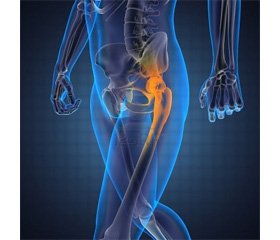Журнал «Боль. Суставы. Позвоночник» 2 (18) 2015
Вернуться к номеру
Allelic Polymorphism of FDPS Gene in Prognosis of Osteoporosis in Young Patients with Osteoarthritis
Авторы: Pasieyshvili L.M., Pasieyshvili T.M. - Kharkiv National Medical University, Kharkiv, Ukraine
Рубрики: Ревматология, Травматология и ортопедия
Разделы: Медицинские форумы
Версия для печати
Статья опубликована на с. 94
Introduction. The occurrence of osteoarthrosis (OA) in young people in most cases is the result of injuries (more often sports) or overweight. Also, one of the concepts of development is cell activation, which is accompanied by an increased destruction of cartilage and decreased of matrix synthesis. Cytokines and growth factors influence on chondrocytes through specific signaling pathways that regulate the synthesis of matrix metalloproteinases. Changes in chondrocytes can disrupt the processes of differentiation and lead to the synthesis of matrix cartilage is not enough high quality. A possible next step of the progression OA is the formation of osteoporosis (OP). One of the ways of OP development may be genetic deviation of the FDPS gene. Diphosphates, which structure includes nitrogen, are inhibitors of the enzyme FDPS, which plays a significant role in the synthesis of cholesterol and triggers apoptosis of osteoblasts. Changes in the given gene provoke decrease in bone mass and bone density.
Aim: To determine the frequency of pathological mutations of the FDPS gene in patients with osteoarthrosis as a marker of the formation of osteoporosis.
Materials and methods. Were examined 32 patients with OA at the age of 21 to 39 years and disease duration from 2 to 17 years. In 15 cases, it was preceded by the appearance of chronic rheumatism of the lower limbs (athletes), in 9 cases, it developed against the background of obesity 2–3 stage. All patients underwent clinical, radiological and densitometric study. DNA diagnostics were studied in blood leukocytes, which included a study of the insertion–deletion polymorphism of FDPS gene — method of polymerase chain reaction with using a diagnostic test systems SNP–Express ACE Alu Ins/Del (Liteh, Russia).
The control group included 50 practically healthy persons of similar age and sex.
Results. The study showed that in 9 cases OA changes at densitometric study has not been identified; 11 patients (34.4 %) were diagnosed with osteopenia and 12 (37.5 %) — osteoporosis of different severity. In the study of polymorphism of FDPS gene was found that in patients with normal densitometry genotype A/A was found in 5 cases (55.6 %), genotype A/C was identified in 3 patients (33.3 %) and patho–logical C/C genotype in 1 (11.1 %). In the group of patients with osteopenia and OA — normal genotype was found in 2 cases (18.2 %); genotype A/C in 6 patients (54.5 %) and pathological genotype (C/C) of the FDPS gene in 3 patients (27.3 %). In the group of patients with OP has increased frequency of pathological mutations (C/C genotype) to 66.7 % (8 patients); and genotype A/C was set at 4 patients (33.3 %). In studying of the prevalence of the FDPS gene of the healthy patients were received the following results: A/A genotype was recorded in 68 % (34 patients), A/C — in 24 % (12) and C/C — 8 % (4 patients).
Thus, patients with OA and osteopenia in 3.4 times frequently were recorded pathological mutation of FDPS gene in comparison with those of the control group. In patients with OA and osteoporosis this indicator was in 8.3 times higher.
Conclusion. In young patients with OA often determined violation of the structure of bone tissue, leading to the formation of osteopenia (11 patients — 34.4 %) or osteoporosis (12 — 37.5 %). Development of such changes in bone tissue occurs against pathological mutation of the FDPS gene (genotype C/C).
Thus, the study variants of the FDPS gene in patients with OA can be used as a marker for the formation of osteoporosis, which allows to develop measures for its prevention.

